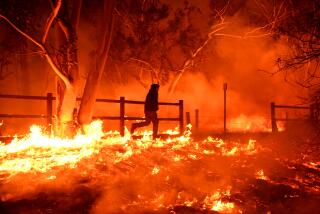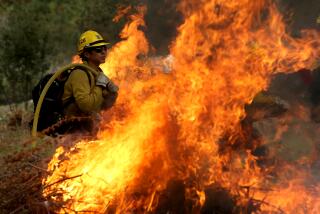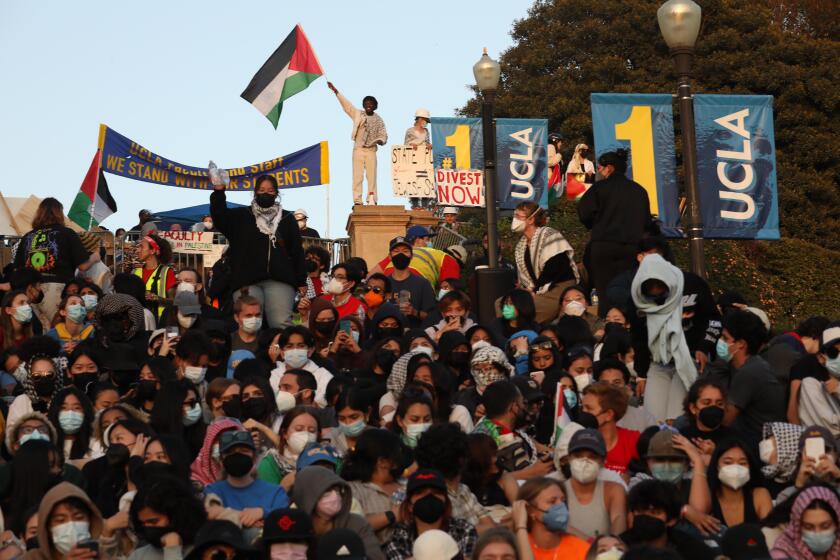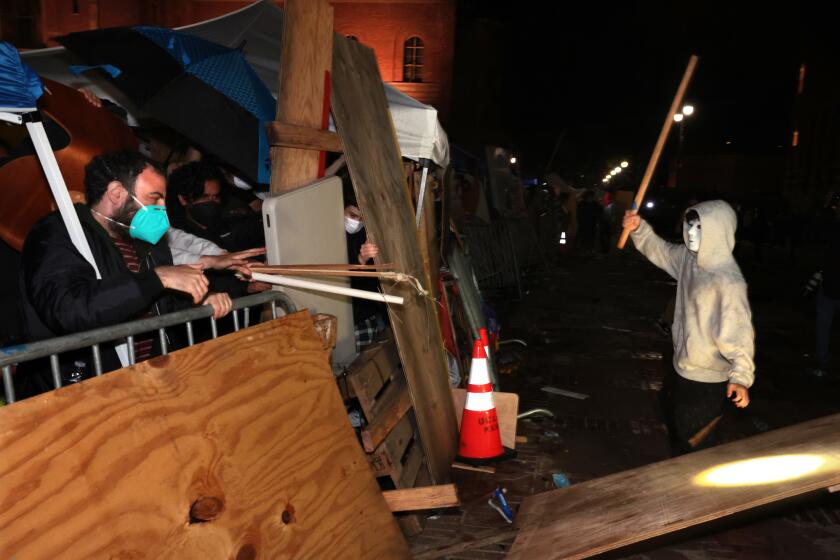With fire out, officials begin planning Griffith Park repairs
Los Angeles officials today will unveil a $50-million emergency repair campaign for a large swath of Griffith Park ravaged by this week’s brush fire.
Park rangers said they want to immediately begin replanting and reseeding the burned hillsides and canyons, fearing major rains this fall could cause massive landslides, threatening park facilities and homes in Los Feliz.
Although some environmentalists have suggested letting the fire zone regrow naturally over time, officials said the slide danger makes that impossible.
“We know we’re going to have to do something to stabilize those hills,” said Jon Mukri, general manager of the city Recreation and Parks Department. “It’s a very expensive proposition. We lost about a quarter of that park. It will take a five- to 10-year cycle of growing before the park looks the way it did the day before the fire.”
The city plans to ask for help from state forestry officials to expedite the recovery effort.
“We need to get a lot done in the next six months because then we’ll be right in the rainy season,” Mukri said. “What happens if we get a bit of rain? All that ash and dirt is going to come rolling down.”
Short-term options include the installation of temporary dams and fencing and “selective replanting” of trees on hillsides deemed to be unstable, Mukri said.
The fire was largely extinguished Thursday, after burning 817 acres in two days.
It had threatened some of L.A.’s most famous landmarks, including the Griffith Observatory, the L.A. Zoo and the merry-go-round. Homes in Los Feliz were evacuated. The fire is considered the largest in the area in three decades.
L.A.’s largest park will remain closed through at least today as authorities continue to assess fire damage and safety issues. The 10th annual Los Angeles Arbor Day Festival, scheduled for Saturday in the park, has been canceled.
As in other post-fire scenarios on public lands, the question remains whether to aggressively replant lost vegetation or allow the ecosystem to recover on its own.
“There’s almost always a debate between doing something active or not doing anything at all,” said Kevin Shaffer, an environmental scientist and fire recovery specialist with the state Department of Fish and Game. “One of the things you want after a fire is to allow the landscape to develop naturally.”
Among purists, there’s often a sentiment against artificially speeding a damaged area’s recovery through replanting or landscaping, Shaffer said. Fire, the theory goes, is part of the natural order of any ecosystem, and can be beneficial.
“There is an assortment of native plants that will not propagate unless there is a fire,” said Albert Torres, chief ranger for Griffith Park.
However, it’s unlikely that authorities will take such a hands-off approach, Shaffer said, because of the unique nature of Griffith Park, which is “almost completely surrounded by urban development.”
Mukri, the recreation and parks chief, said the thousands of residents living at the bottom of Griffith Park hillsides make stabilizing the hills a top priority.
“Letting nature take its course is not an option,” he said.
The fire burned popular hiking destinations, including the lush Dante’s View area near Mt. Hollywood. Dante’s View was planted over decades by various park lovers.
It’s unclear whether the city will attempt to re-create that area -- or how.
Some believe the blaze will help fire prevention in the short term because there is less vegetation to fuel future fires.
“But it won’t take more than a couple of years for the plants and grasses to grow back,” said Marty O’Toole, fire education and prevention specialist for the National Park Service.
ashraf.khalil@latimes.com
Times staff writers Rong-Gong Lin II and Anna Gorman contributed to this report.
More to Read
Start your day right
Sign up for Essential California for news, features and recommendations from the L.A. Times and beyond in your inbox six days a week.
You may occasionally receive promotional content from the Los Angeles Times.






